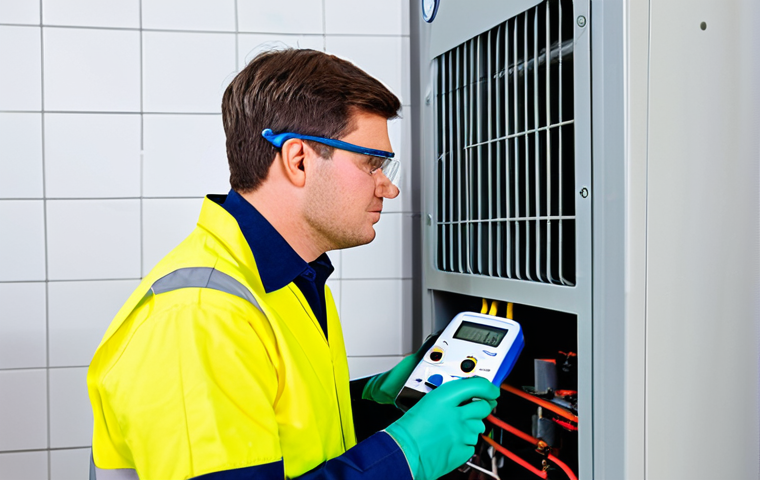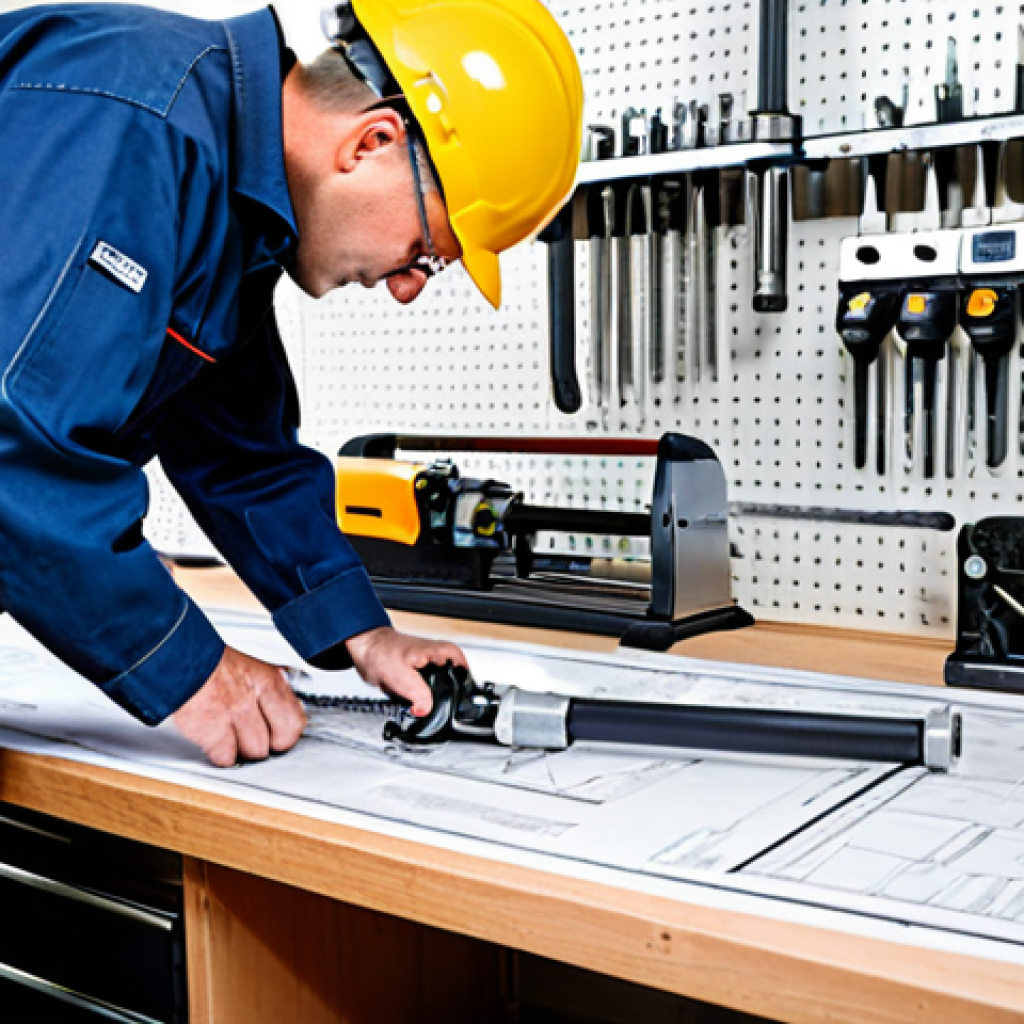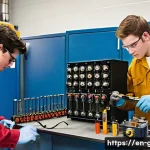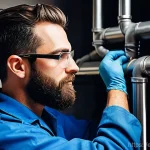So, you’re gearing up for the Gas Appliace Technician Practical Exam? Awesome! I remember when I was preparing for mine.
It felt like trying to juggle chainsaws while riding a unicycle. Getting your supplies right is half the battle, honestly. Forget something crucial, and you might as well hand your examiner a note that says, “Please fail me.” Plus, with the way costs are rising these days, you definitely want to avoid buying anything twice.
So, let’s make sure you’re fully equipped before heading into that exam room. Let’s dive in and make sure you have everything you need!
Alright, let’s get this gas appliance technician practical exam prep nailed down.
Decoding the Blueprint: Mastering Technical Drawings

Navigating blueprints can feel like deciphering an ancient language at first, but trust me, it’s a skill you’ll quickly come to appreciate. I remember one exam where I misread a valve size on a schematic, and it nearly cost me the whole project!
Don’t let that be you.
Understanding Symbols and Notations
Blueprints are filled with a whole alphabet soup of symbols, abbreviations, and notations. Knowing what each one means is non-negotiable. Think of it as learning the vocabulary of the trade.
For example, understanding the difference between a globe valve and a gate valve symbol can save you from installing the wrong component – a mistake that can be costly and time-consuming.
I always recommend making flashcards with symbols on one side and their meanings on the other. It’s old-school, but it works.
Measuring and Scaling Accurately
Accurate measurement is absolutely critical in gas fitting. Blueprints are drawn to scale, so you need to know how to convert those scaled measurements into real-world dimensions.
I’ve seen guys fail because they didn’t properly account for the scale and ended up cutting pipes too short or installing components in the wrong locations.
Double-check your calculations, and don’t be afraid to use a ruler or scale ruler to confirm your measurements. Remember, “measure twice, cut once” applies here.
Tracing Gas Lines and Identifying Components
Following the gas lines on a blueprint is like tracing a roadmap. You need to be able to identify each component along the line – regulators, valves, meters, etc.
– and understand how they interact. During my exam, I was asked to identify a specific valve on a complex schematic. Because I had practiced tracing lines and identifying components, I was able to answer quickly and confidently.
Without that skill, I would have been completely lost.
Essential Hand Tools: Your Trusty Sidekicks
Having the right hand tools and knowing how to use them efficiently is crucial. Don’t try to get by with a rusty old wrench or a dull pipe cutter. Invest in quality tools and keep them in good working order.
Your performance (and your knuckles) will thank you.
Wrenches: The Right Grip for the Job
You’ll need a variety of wrenches for different tasks, from pipe wrenches for tightening fittings to adjustable wrenches for general use. I recommend having at least two pipe wrenches – one large and one small – to handle different pipe sizes.
Make sure your wrenches are clean and well-maintained, and always use the correct size wrench for the job. Using the wrong size can damage the fitting and potentially lead to a gas leak.
Pipe Cutters and Threaders: Precision is Key
A good pipe cutter is essential for cutting clean, square edges on pipes. And if you’re working with threaded pipe, you’ll need a pipe threader to create those threads.
Invest in quality cutters and threaders that can handle the types of pipes you’ll be working with. I once tried to save money by buying a cheap pipe cutter, and it ended up leaving jagged edges and burrs.
It cost me extra time to clean up the mess, and the finished product was far from professional.
Leak Detection Tools: Sniffing Out Trouble
Leak detection tools are indispensable for ensuring the safety of your gas installations. Whether it’s a simple bubble leak detector or a more sophisticated electronic leak detector, you need to have the right tools for the job.
I always carry a spray bottle filled with soapy water for quick leak checks. If you suspect a gas leak, spray the soapy water on the connections and look for bubbles.
If you see bubbles, you’ve got a leak.
Safety First: Gear Up for Protection
Safety should always be your top priority when working with gas appliances. That means wearing the appropriate personal protective equipment (PPE) and following safety procedures.
Don’t cut corners when it comes to safety; it’s not worth the risk.
Eye Protection: Shielding Your Sight
Protect your eyes from debris, sparks, and other hazards by wearing safety glasses or goggles. I’ve seen guys get metal filings in their eyes from grinding or cutting pipe, and it’s not a pleasant experience.
Make sure your eye protection fits properly and provides adequate coverage.
Hand Protection: Gloves for Grip and Guard
Wear gloves to protect your hands from cuts, burns, and chemical exposure. Leather gloves are a good choice for general-purpose work, while rubber gloves are better for handling chemicals.
Make sure your gloves fit properly and allow you to maintain a good grip on your tools.
Appropriate Attire: Dressing for the Task
Wear clothing that is appropriate for the task at hand. Avoid loose-fitting clothing that could get caught in machinery, and wear sturdy work boots to protect your feet.
I always recommend wearing flame-resistant clothing when working around gas appliances.
Measuring Instruments: Accuracy is Everything
Precision is paramount when working with gas appliances. Using the right measuring instruments ensures accuracy and helps prevent errors that could compromise safety.
Manometers: Gauging Pressure Precisely
A manometer is used to measure gas pressure. You’ll need a manometer to check the pressure of gas lines and appliances. There are different types of manometers available, including U-tube manometers and digital manometers.
Choose a manometer that is appropriate for the pressure range you’ll be measuring and make sure it’s calibrated correctly.
Thermometers: Monitoring Temperature
A thermometer is used to measure temperature. You’ll need a thermometer to check the temperature of gas appliances and components. There are different types of thermometers available, including digital thermometers and infrared thermometers.
Choose a thermometer that is appropriate for the temperature range you’ll be measuring and make sure it’s accurate.
Multimeters: Electrical Diagnostics
A multimeter is used to measure voltage, current, and resistance. You’ll need a multimeter to troubleshoot electrical problems in gas appliances. Make sure you know how to use a multimeter safely and effectively.
Pipe and Fittings: Choosing the Right Components
Selecting the correct pipes and fittings is essential for creating secure and leak-free gas connections. Using the wrong components can lead to dangerous gas leaks and potential hazards.
Understanding Pipe Materials: Steel, Copper, and More
Gas pipes are typically made from steel or copper, each with its own advantages and disadvantages. Steel pipes are strong and durable, but they are also susceptible to corrosion.
Copper pipes are more resistant to corrosion, but they are also more expensive. Choose the pipe material that is best suited for the application and the environment.
Selecting the Right Fittings: Unions, Elbows, and Tees
Fittings are used to connect pipes and components. There are many different types of fittings available, including unions, elbows, tees, and couplings.
Choose the fittings that are appropriate for the pipe material and the application. Make sure the fittings are compatible with the pipes and that they are properly sized.
Thread Sealant: Ensuring a Leak-Proof Seal
Thread sealant is used to create a leak-proof seal between threaded pipes and fittings. There are different types of thread sealant available, including pipe dope and Teflon tape.
Choose a thread sealant that is appropriate for the pipe material and the application. Apply the thread sealant evenly to the threads and tighten the fitting securely.
Here’s a quick rundown of some essential tools and materials:
| Item | Description | Purpose |
|---|---|---|
| Pipe Wrenches | Various sizes, typically 12″ and 18″ | Gripping and turning pipes for installation and removal |
| Pipe Cutter | A tool for cutting pipes cleanly and squarely | Cutting pipes to the desired length |
| Pipe Threader | Creates threads on pipe ends | Threading pipes for secure connections |
| Gas Leak Detector | Electronic or soapy water spray | Detecting gas leaks in fittings and connections |
| Manometer | U-tube or digital | Measuring gas pressure accurately |
| Multimeter | Digital display for measuring voltage, current, and resistance | Electrical troubleshooting and diagnostics |
| Thread Sealant | Pipe dope or Teflon tape | Creating a leak-proof seal on threaded connections |
| Safety Glasses | Protective eyewear | Protecting eyes from debris and hazards |
| Gloves | Leather or work gloves | Protecting hands from cuts, burns, and chemicals |
Ventilation and Combustion Air: Breathing Room for Safety
Proper ventilation and combustion air are critical for the safe operation of gas appliances. Insufficient ventilation can lead to incomplete combustion, which can produce carbon monoxide, a deadly gas.
Calculating Ventilation Requirements
The amount of ventilation required for a gas appliance depends on the size and type of appliance. Consult the manufacturer’s instructions or a qualified HVAC professional to determine the ventilation requirements for your specific appliance.
Ensuring Adequate Combustion Air
Combustion air is the air that is needed for the gas to burn properly. Make sure there is an adequate supply of combustion air to the appliance. This may involve installing vents or louvers to allow fresh air to enter the room.
Avoiding Obstructions
Make sure vents and louvers are not obstructed by furniture, curtains, or other objects. Obstructions can reduce the amount of ventilation and combustion air available to the appliance.
Gas Codes and Regulations: Staying Compliant
Gas codes and regulations are in place to protect the public from the hazards of gas appliances. It’s essential to be familiar with the gas codes and regulations in your area and to comply with them at all times.
Understanding Local Codes
Gas codes vary from one jurisdiction to another. Be sure to familiarize yourself with the gas codes in your area. You can usually find this information on the website of your local building department or gas utility.
Staying Up-to-Date
Gas codes are constantly being updated, so it’s important to stay up-to-date on the latest changes. Attend training courses or subscribe to industry publications to keep your knowledge current.
Following Best Practices
In addition to complying with gas codes, it’s also important to follow best practices for gas appliance installation and repair. This includes using quality materials, following manufacturer’s instructions, and performing thorough safety checks.
By mastering these key areas, you’ll be well-prepared to tackle the gas appliance technician practical exam with confidence. Good luck! Alright, let’s get this gas appliance technician practical exam prep nailed down.
Decoding the Blueprint: Mastering Technical Drawings
Navigating blueprints can feel like deciphering an ancient language at first, but trust me, it’s a skill you’ll quickly come to appreciate. I remember one exam where I misread a valve size on a schematic, and it nearly cost me the whole project! Don’t let that be you.
Understanding Symbols and Notations
Blueprints are filled with a whole alphabet soup of symbols, abbreviations, and notations. Knowing what each one means is non-negotiable. Think of it as learning the vocabulary of the trade. For example, understanding the difference between a globe valve and a gate valve symbol can save you from installing the wrong component – a mistake that can be costly and time-consuming. I always recommend making flashcards with symbols on one side and their meanings on the other. It’s old-school, but it works.
Measuring and Scaling Accurately
Accurate measurement is absolutely critical in gas fitting. Blueprints are drawn to scale, so you need to know how to convert those scaled measurements into real-world dimensions. I’ve seen guys fail because they didn’t properly account for the scale and ended up cutting pipes too short or installing components in the wrong locations. Double-check your calculations, and don’t be afraid to use a ruler or scale ruler to confirm your measurements. Remember, “measure twice, cut once” applies here.
Tracing Gas Lines and Identifying Components
Following the gas lines on a blueprint is like tracing a roadmap. You need to be able to identify each component along the line – regulators, valves, meters, etc. – and understand how they interact. During my exam, I was asked to identify a specific valve on a complex schematic. Because I had practiced tracing lines and identifying components, I was able to answer quickly and confidently. Without that skill, I would have been completely lost.
Essential Hand Tools: Your Trusty Sidekicks
Having the right hand tools and knowing how to use them efficiently is crucial. Don’t try to get by with a rusty old wrench or a dull pipe cutter. Invest in quality tools and keep them in good working order. Your performance (and your knuckles) will thank you.
Wrenches: The Right Grip for the Job
You’ll need a variety of wrenches for different tasks, from pipe wrenches for tightening fittings to adjustable wrenches for general use. I recommend having at least two pipe wrenches – one large and one small – to handle different pipe sizes. Make sure your wrenches are clean and well-maintained, and always use the correct size wrench for the job. Using the wrong size can damage the fitting and potentially lead to a gas leak.
Pipe Cutters and Threaders: Precision is Key
A good pipe cutter is essential for cutting clean, square edges on pipes. And if you’re working with threaded pipe, you’ll need a pipe threader to create those threads. Invest in quality cutters and threaders that can handle the types of pipes you’ll be working with. I once tried to save money by buying a cheap pipe cutter, and it ended up leaving jagged edges and burrs. It cost me extra time to clean up the mess, and the finished product was far from professional.
Leak Detection Tools: Sniffing Out Trouble
Leak detection tools are indispensable for ensuring the safety of your gas installations. Whether it’s a simple bubble leak detector or a more sophisticated electronic leak detector, you need to have the right tools for the job. I always carry a spray bottle filled with soapy water for quick leak checks. If you suspect a gas leak, spray the soapy water on the connections and look for bubbles. If you see bubbles, you’ve got a leak.
Safety First: Gear Up for Protection
Safety should always be your top priority when working with gas appliances. That means wearing the appropriate personal protective equipment (PPE) and following safety procedures. Don’t cut corners when it comes to safety; it’s not worth the risk.
Eye Protection: Shielding Your Sight
Protect your eyes from debris, sparks, and other hazards by wearing safety glasses or goggles. I’ve seen guys get metal filings in their eyes from grinding or cutting pipe, and it’s not a pleasant experience. Make sure your eye protection fits properly and provides adequate coverage.
Hand Protection: Gloves for Grip and Guard
Wear gloves to protect your hands from cuts, burns, and chemical exposure. Leather gloves are a good choice for general-purpose work, while rubber gloves are better for handling chemicals. Make sure your gloves fit properly and allow you to maintain a good grip on your tools.
Appropriate Attire: Dressing for the Task
Wear clothing that is appropriate for the task at hand. Avoid loose-fitting clothing that could get caught in machinery, and wear sturdy work boots to protect your feet. I always recommend wearing flame-resistant clothing when working around gas appliances.
Measuring Instruments: Accuracy is Everything
Precision is paramount when working with gas appliances. Using the right measuring instruments ensures accuracy and helps prevent errors that could compromise safety.
Manometers: Gauging Pressure Precisely
A manometer is used to measure gas pressure. You’ll need a manometer to check the pressure of gas lines and appliances. There are different types of manometers available, including U-tube manometers and digital manometers. Choose a manometer that is appropriate for the pressure range you’ll be measuring and make sure it’s calibrated correctly.
Thermometers: Monitoring Temperature
A thermometer is used to measure temperature. You’ll need a thermometer to check the temperature of gas appliances and components. There are different types of thermometers available, including digital thermometers and infrared thermometers. Choose a thermometer that is appropriate for the temperature range you’ll be measuring and make sure it’s accurate.
Multimeters: Electrical Diagnostics
A multimeter is used to measure voltage, current, and resistance. You’ll need a multimeter to troubleshoot electrical problems in gas appliances. Make sure you know how to use a multimeter safely and effectively.
Pipe and Fittings: Choosing the Right Components
Selecting the correct pipes and fittings is essential for creating secure and leak-free gas connections. Using the wrong components can lead to dangerous gas leaks and potential hazards.
Understanding Pipe Materials: Steel, Copper, and More
Gas pipes are typically made from steel or copper, each with its own advantages and disadvantages. Steel pipes are strong and durable, but they are also susceptible to corrosion. Copper pipes are more resistant to corrosion, but they are also more expensive. Choose the pipe material that is best suited for the application and the environment.
Selecting the Right Fittings: Unions, Elbows, and Tees
Fittings are used to connect pipes and components. There are many different types of fittings available, including unions, elbows, tees, and couplings. Choose the fittings that are appropriate for the pipe material and the application. Make sure the fittings are compatible with the pipes and that they are properly sized.
Thread Sealant: Ensuring a Leak-Proof Seal
Thread sealant is used to create a leak-proof seal between threaded pipes and fittings. There are different types of thread sealant available, including pipe dope and Teflon tape. Choose a thread sealant that is appropriate for the pipe material and the application. Apply the thread sealant evenly to the threads and tighten the fitting securely.
Here’s a quick rundown of some essential tools and materials:
| Item | Description | Purpose |
|---|---|---|
| Pipe Wrenches | Various sizes, typically 12″ and 18″ | Gripping and turning pipes for installation and removal |
| Pipe Cutter | A tool for cutting pipes cleanly and squarely | Cutting pipes to the desired length |
| Pipe Threader | Creates threads on pipe ends | Threading pipes for secure connections |
| Gas Leak Detector | Electronic or soapy water spray | Detecting gas leaks in fittings and connections |
| Manometer | U-tube or digital | Measuring gas pressure accurately |
| Multimeter | Digital display for measuring voltage, current, and resistance | Electrical troubleshooting and diagnostics |
| Thread Sealant | Pipe dope or Teflon tape | Creating a leak-proof seal on threaded connections |
| Safety Glasses | Protective eyewear | Protecting eyes from debris and hazards |
| Gloves | Leather or work gloves | Protecting hands from cuts, burns, and chemicals |
Ventilation and Combustion Air: Breathing Room for Safety
Proper ventilation and combustion air are critical for the safe operation of gas appliances. Insufficient ventilation can lead to incomplete combustion, which can produce carbon monoxide, a deadly gas.
Calculating Ventilation Requirements
The amount of ventilation required for a gas appliance depends on the size and type of appliance. Consult the manufacturer’s instructions or a qualified HVAC professional to determine the ventilation requirements for your specific appliance.
Ensuring Adequate Combustion Air
Combustion air is the air that is needed for the gas to burn properly. Make sure there is an adequate supply of combustion air to the appliance. This may involve installing vents or louvers to allow fresh air to enter the room.
Avoiding Obstructions
Make sure vents and louvers are not obstructed by furniture, curtains, or other objects. Obstructions can reduce the amount of ventilation and combustion air available to the appliance.
Gas Codes and Regulations: Staying Compliant
Gas codes and regulations are in place to protect the public from the hazards of gas appliances. It’s essential to be familiar with the gas codes and regulations in your area and to comply with them at all times.
Understanding Local Codes
Gas codes vary from one jurisdiction to another. Be sure to familiarize yourself with the gas codes in your area. You can usually find this information on the website of your local building department or gas utility.
Staying Up-to-Date
Gas codes are constantly being updated, so it’s important to stay up-to-date on the latest changes. Attend training courses or subscribe to industry publications to keep your knowledge current.
Following Best Practices
In addition to complying with gas codes, it’s also important to follow best practices for gas appliance installation and repair. This includes using quality materials, following manufacturer’s instructions, and performing thorough safety checks.
By mastering these key areas, you’ll be well-prepared to tackle the gas appliance technician practical exam with confidence. Good luck!
Wrapping Up
So, you’ve absorbed a ton of info here, ready to ace that exam? Remember, practice makes perfect. Get hands-on whenever you can, whether it’s through apprenticeships or even helping out a seasoned tech. Your commitment to safety and precision will truly set you apart!
Useful Tips to Know
1. Check your local community college or trade school for exam prep courses. These can be a game-changer, offering focused instruction and practice exams.
2. Join a local trade association. Networking with other professionals can provide mentorship and job opportunities.
3. Invest in a good quality multi-tool. It’s a real time-saver on the job and shows you are prepared. Klein Tools is a great brand to consider.
4. Always keep a copy of the local gas codes and regulations on hand. You can typically find these on your local government’s website.
5. Keep an eye out for industry-specific podcasts and online forums. They are excellent sources for staying up-to-date on best practices and new technologies.
Key Takeaways
• Mastering blueprints is crucial for understanding gas systems.
• Having the right tools and knowing how to use them efficiently is essential.
• Safety should always be your top priority when working with gas appliances.
• Accuracy is paramount when using measuring instruments.
• Understanding and complying with gas codes and regulations is critical.
Frequently Asked Questions (FAQ) 📖
Q: What’s the one tool I absolutely cannot forget for the Gas
A: ppliance Technician Practical Exam? A1: Okay, if I had to pick just ONE thing (and trust me, you shouldn’t only bring one thing!), it’d be a quality manometer.
Seriously, it’s your lifeline for checking gas pressures and proving everything’s within spec. Imagine trying to bake a cake without a measuring cup – you might get away with it, but it’s a gamble.
A reliable manometer is the same; it’s the only way to precisely dial everything in. Spend the extra few bucks and get a good digital one; my old analog version used to give me fits!
Q: Are there any specific safety items I need to bring to the exam, or will the testing center provide those?
A: Don’t assume anything is provided, my friend. Think of it like going to a construction site – hard hat, safety glasses, work gloves… all YOU, baby!
A combustible gas leak detector is non-negotiable for finding sneaky gas leaks that could blow everything up. It shows you’re serious about safety. You also need your safety glasses and work gloves.
I’d personally bring my own hearing protection too, just in case. Better safe than sorry… and deaf!
Q: Where can I find a comprehensive checklist of all the required supplies for the Gas
A: ppliance Technician Practical Exam? It’s all a little overwhelming! A3: I totally get the overwhelm – it’s like preparing for a final exam AND building a rocket at the same time!
Your best bet is to check the official website or handbook provided by the testing organization administering the exam. They usually have a detailed list of EVERYTHING you need, and any specific requirements.
Otherwise, ask any collegues with the license, or go on online forums and ask there. Search for a thread or ask for one and you should be all set. Be careful though, and vet the answers by comparing with what the official websites say as well!
Good luck! You got this!
📚 References
Wikipedia Encyclopedia
구글 검색 결과
구글 검색 결과
구글 검색 결과
구글 검색 결과
구글 검색 결과





